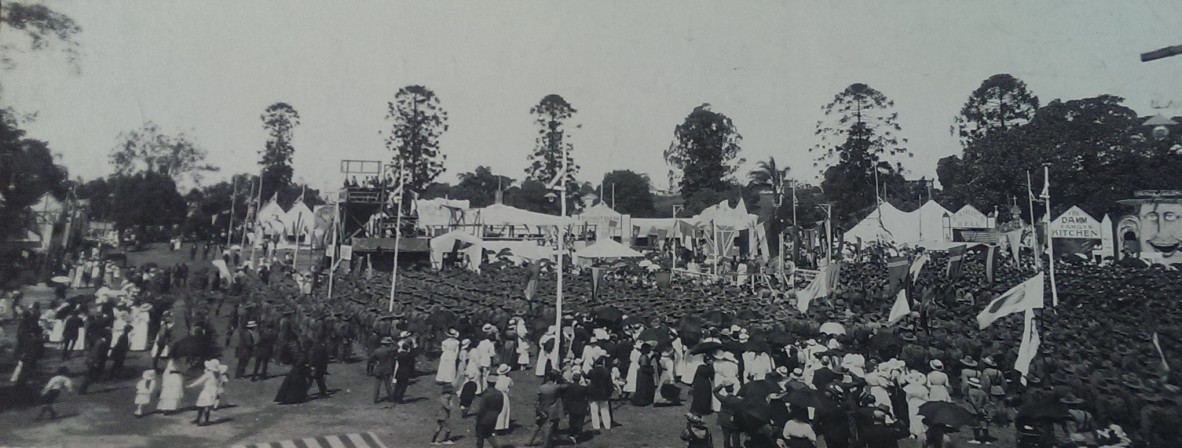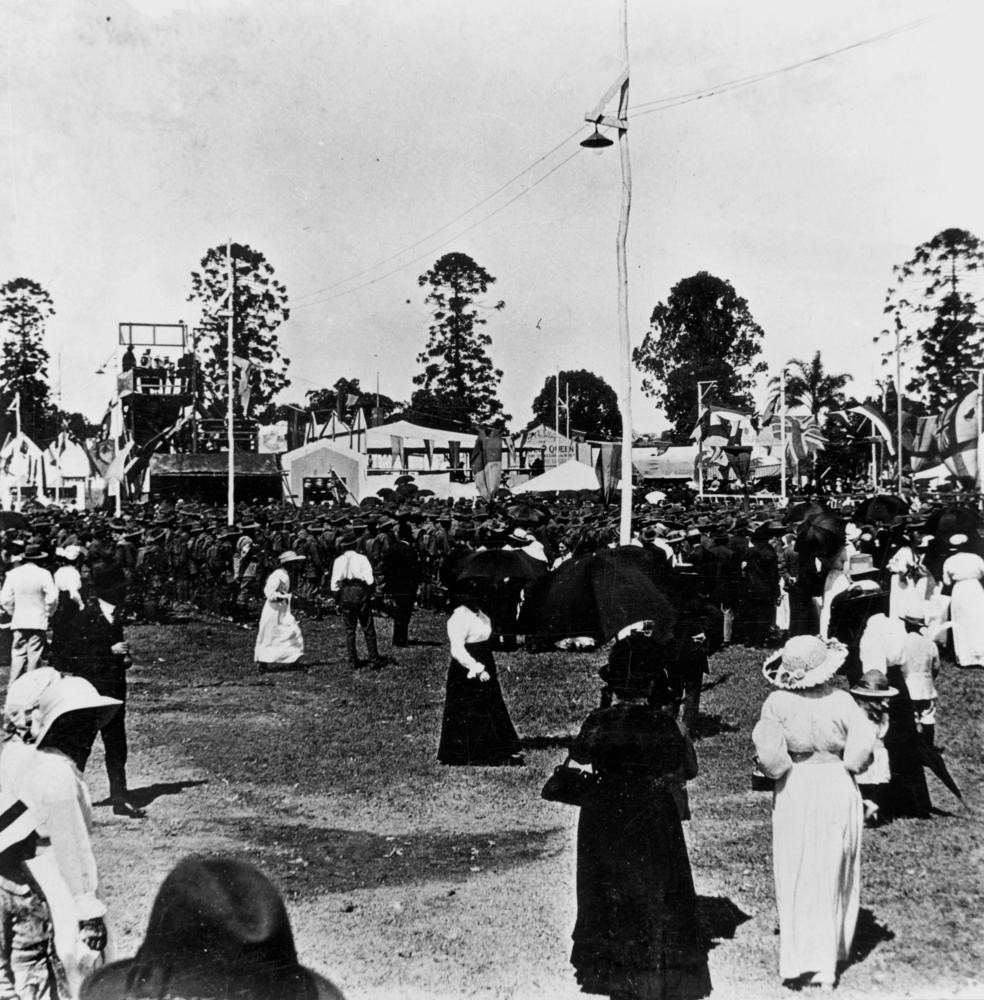A wartime spectacle in Brisbane: The Allies' Garden City
By JOL Admin | 24 April 2014
Guest blogger: Timothy Roberts - The Royal Historical Society of Queensland
The Royal Historical Society of Queensland’s bountiful collection of material relating to Queensland’s involvement in the Great War includes two panoramic photographs of the Allies’ Garden City, a patriotic carnival hosted in Brisbane’s Botanic Gardens from 9 December 1916 to 3 January 1917. Documentary images of the City are rare, with few photographs appearing in contemporary media and only a handful of prints in the State Library of Queensland’s collection.

Queensland’s wartime patriotic events entertained residents on the home front and raised money to support Australian troops abroad. The Queensland War Council received donations from a number of organisations, including the Wattle Day League, the Witta Patriotic Fund and even the Morven Jockey Club which organised a fundraising race meet. Social groups held charity auctions, local communities managed fetes, and the Official Entertainments Committee of the Queensland War Council organised grand social spectacles like the Allies’ Garden City.
The RHSQ panoramas and images in the SLQ collection record a large group of Australian infantry surrounding the City’s central grandstand. Thousands of troops converged upon the Allies’ Garden City for Repatriation Day celebrations on 15 December 1916, where Queensland Governor Sir Hamilton Goold-Adams addressed the crowd and presented selected returned soldiers with medals of good conduct and distinguished service.

Stalls in the Allies’ Garden City were themed to represent Allied nations, including Belgium (a bombarded cathedral, reminiscent of the Cloth Hall at Ypres), Japan (a tea pagoda with open-air theatre), and Fiji (an island paradise decked with palm fronds). Attractions included “Sylvia the Tattooed Queen”, a witches’ cavern, hall of mystery, “the world’s fastest photographer”, a ladies’ shooting gallery, an “indescribable, interesting, inimitable” x-ray display, and a merry-go-round. Evening concerts by the Austral Band and the Allies’ Garden City Concert Band entertained visitors; as did performances by the Merry Madcaps Costume Comedy Co. and JS McAllister’s Comedy Drama Company; and acrobatic displays by ‘the flying aerial’ Miss Gertie Wirth. Children were certainly not forgotten, with Charlie Chaplin and Santa Claus promenading around the grounds of the City.
On opening the City, Minister for Lands and Chair of the Queensland War Council JM Hunter acknowledged ‘about 1000 ladies and 2000 gentlemen’ had donated their time and energy to manifesting the City. Home-made cakes, biscuits, confections and scones were staples in the City’s cafes; and volunteers operated stalls, supervised side shows, and carried donation boxes around the grounds. So strong was the message to support patriotic events that even Lady Philp, wife of former Queensland Premier Sir Robert Philp, took over the management of the Café Chantant during the exhibition. When the Allies’ Garden City closed on 3 January 1917, The Queensland Times noted the City raised £4700 for the Repatriation Fund. The City was reopened for another 10 days from 10 January to raise funds for the distressed survivors in Clermont, which had been devastated by flooding during cyclonic conditions shortly after Christmas 1916.
The Royal Historical Society of Queensland’s panorama of the Allies’ Garden City will be on display at the Commissariat Store Museum throughout 2014 in the exhibition Call to Duty: Stories from the Great War. Visitors are invited to explore photographs, diaries, correspondence and objects that reveal stories of Australians on the Front, and detail life in Queensland during the war years. The exhibition will be launched as a part of the Rumours: Stories from the Great War open day on 26 April 201, and includes talks by guest speakers and a afternoon ‘Show and Tell’ session where members will share their treasured World War One memorabilia. Please contact the Society for further details.
References
1 - Queensland War Council Records 1915-1931. State Library of Queensland OM74-27 Box 8889. The records constitute a savings account book, which, amongst others, notes donations from the Ladies’ Amateur Athletics Club, the Taringa Fete, and proceeds from the raffle of a cushion at Dirranbandi.
2 - ‘Arrangements have been made for open air performances in a roofless theatre, 106ft by 80ft, the interior of which has been painted to represent a Japanese village.’ The Brisbane Courier, Thurs 7 December 1916, p8.
3 - The Brisbane Courier, Mon 11 December 1916, p4.
4 - The Brisbane Courier, Wed 13 December 1916, p8; Thurs 21 December 1916, p8.
5 - The Queensland Times, Wed 17 January 1917, p7; The Week, Fri 12 January 1917, p16.
6 - The Week, Fri 12 January 1917, p16; The Queensland Times, Wed 17 January 1917, p7.
Comments
Your email address will not be published.
We welcome relevant, respectful comments.